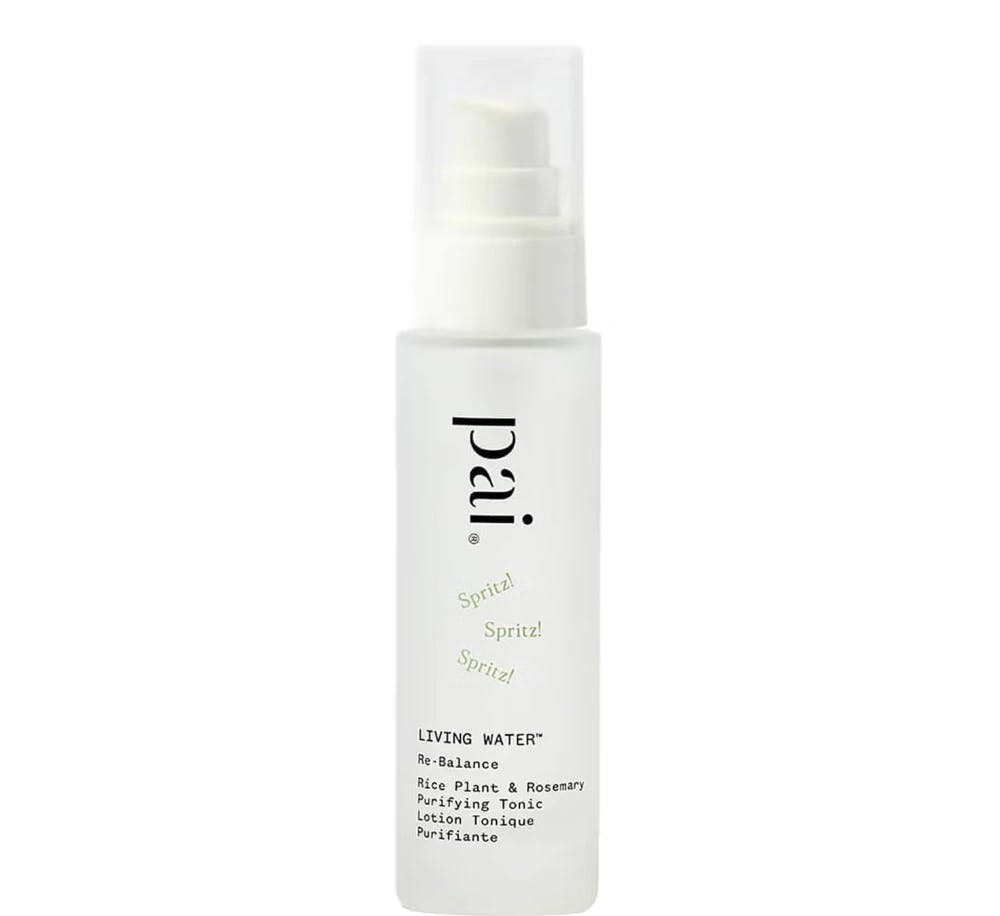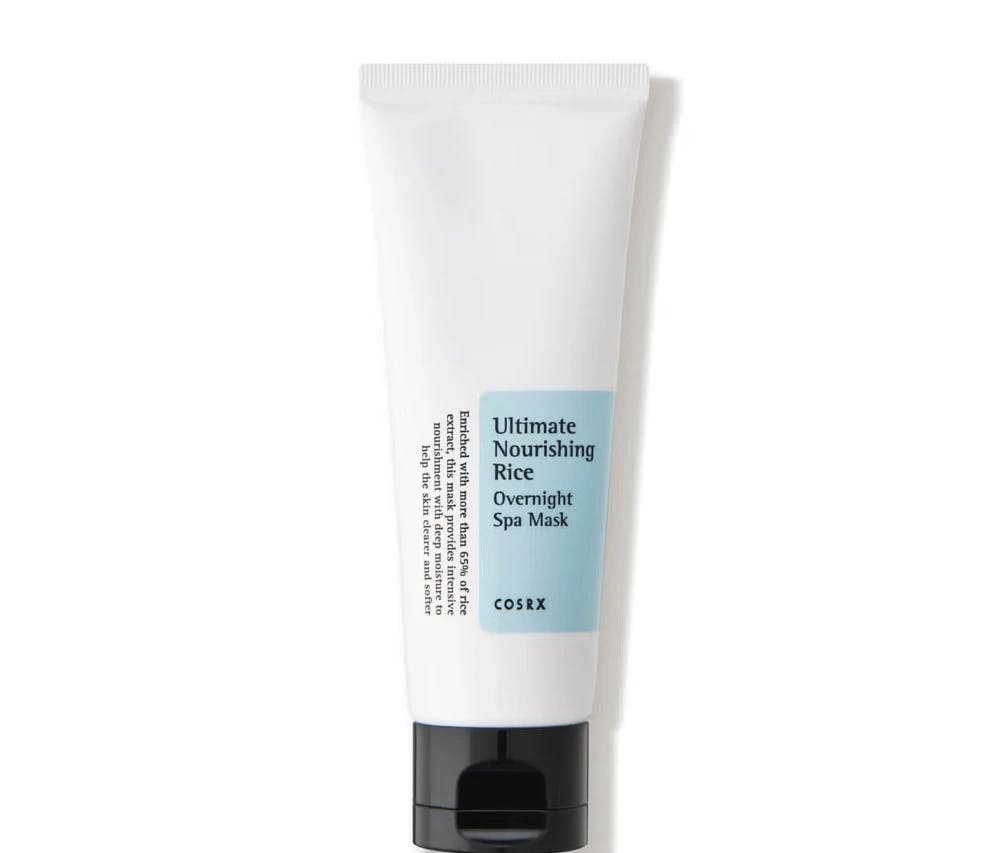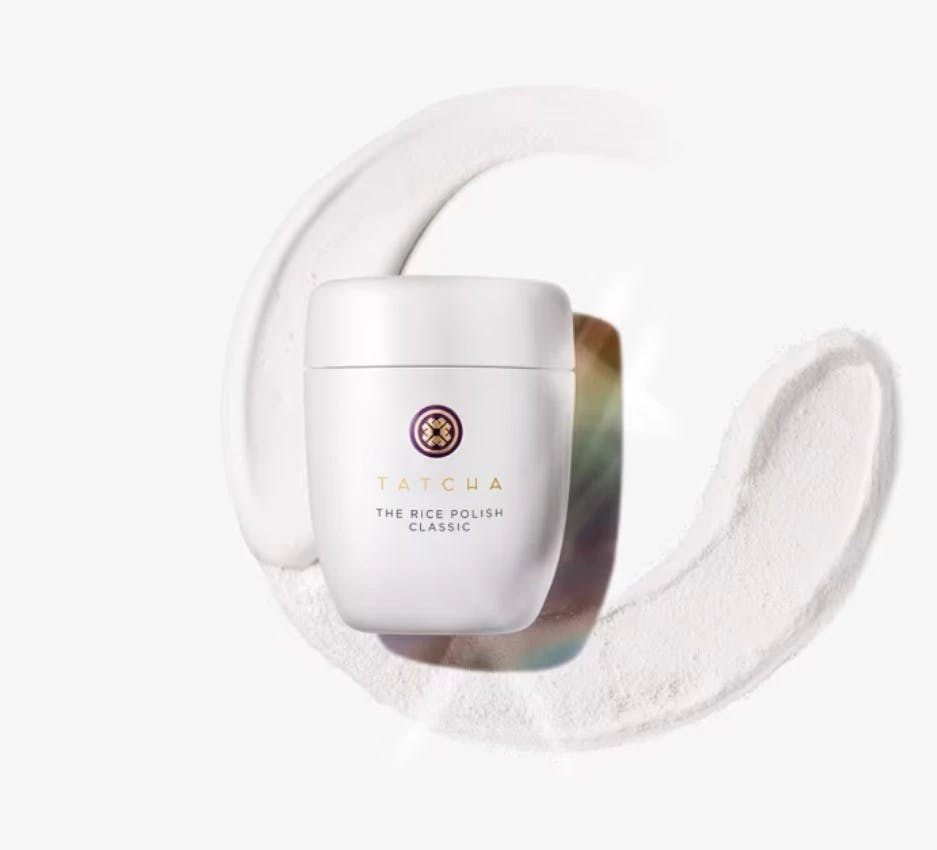The $1 Korean Skincare Product That Changed My Life
Rice water has been used for centuries for bright, clear skin, but its natural anti-aging properties are only just beginning to be studied. Turns out, there’s a surprising amount of evidence for this extremely cheap skincare solution.

I’ll be honest, I’m all over the place on skincare. Aside from my beef tallow, SPF, and cleanser, just about anything else goes. I’ve tried countless fads and TikTok trends with varying degrees of success: snail mucin, red light therapy, tretinoin, you name it. My skincare cabinet is the science lab, and I am but its humble lab rat. Then, I switched from my bathroom cabinet to my kitchen cabinet, and I’m really glad I did.
By now, we’ve probably all heard about using rice water to promote hair growth, but then I came across a reel of a woman using it for a facial instead. It almost seemed too simple to be true, and in some ways, I felt silly going to my cabinet for my bag of rice. But as I sat there with wet paper towels on my face, I found out that this skincare hack wasn’t a fad at all. In fact, it’s one of the oldest – and cheapest – tricks in the book.
Evie's product selections are curated by the editorial team. If you buy something through our links, we may earn an affiliate commission, at no cost to you. We only recommend products we genuinely love.
Rice Water Origins
While rice water may have only made its debut on Western TikTok more recently, its origins go way back in Eastern skincare. Though it’s not clear exactly who first pioneered its use, it began to get popular in East Asia as early as the first century AD. Korean queen Heo Hwang Ok is widely credited with introducing rice cultivation to her region, after which rice water became a staple in many ancient Koreans’ skincare routines. The practice was similarly popular in China a bit later during the Tang Dynasty, where women took advantage of the substance’s complexion-boosting effects. Japanese geishas are also said to have relied on rice for their beautiful skin, using a paste made of fermented rice bran called Nuka Bijin and applying it not only to their faces but sometimes their whole bodies.
Rice as a skincare ingredient has since ballooned into an entire industry, and these days, you can find it in just about any form you find most convenient. Though rice water itself is most easily used as a toner or at-home face mask, there’s a rice water infused skincare product for everyone to love, from overnight masks to exfoliants and everything in between.
Pai Skincare Living Water Rice Plant and Rosemary Purifying Tonic, $38

COSRX Ultimate Nourishing Rice Overnight Spa Mask, $18

Tatcha The Rice Polish: Classic Foaming Enzyme Powder, $68

The Benefits of Rice Water Facials
So, what does rice water actually do for your face? Well, an impressive amount. I’ll admit I was fairly skeptical about it at first, mostly since it seemed too simple (and, let’s be honest, too cheap) to be true. After all, a bag of rice was $1 at Target, and a cup of water is thankfully still cheap even in this economy.
Rice water’s benefits come mostly from its amino acids and minerals, which are said to nourish the skin and slow its aging process. One 2018 study showed that rice water reduced the activity of elastase, an enzyme that ages the skin, which could mean that rice water actually helps keep new fine lines and wrinkles from forming. Another study in 2001 tested inositol, an antioxidant naturally found in rice water, and found that it boosted skin’s moisture and elasticity, reduced wrinkles, and, interestingly enough, brought both oily and dry skin back to a neutral middle ground.
Though there is less research on the topic, rice water is said to also act as a natural sunscreen, with some saying it has a natural SPF of around 30. Its soothing properties also help the skin recover from sun damage, and its B vitamins and antioxidants help protect the skin against free radicals and other environmental toxins. Its tightening properties help shrink pores, though not everyone likes the starchy feeling on their skin.
Personally, the biggest effect I noticed was the brightening effect. I’m naturally very pale, and I find that especially in the winter, my skin looks kind of dull, even if the color doesn’t change per se. Using rice water, even just for a couple of days, made me look so healthy and well-rested, and after three days, I actually stopped wearing my usual tinted moisturizer out of the house because I felt like I looked better without it.
I should stress I have seen some people say they feel like rice water actually lightens their skin, which I’ll admit isn’t a problem I’d notice given that I’ve got almost no melanin to start with, so if that’s a concern for you, it’s something to keep an eye on, and you may want to consider moderating your use. The silver lining, however, is that these lightening and brightening effects definitely work on dark spots and hyperpigmentation, so if you suffer from uneven tone like I do, it might be worth a try for a week or two.
How To Use Rice Water as Skincare
Making rice water is pretty easy. Take about a cup of washed rice (eyeball it) and about two cups of water (again, this is not an exact science – measure with your heart), and put them in a bowl. Next, wait about an hour or whenever there’s a good break in your next episode of The Bachelor (again, I cannot stress enough how inexact of a science this is). Strain the rice so you’re just keeping the water. Boom. Rice water. I remake mine once a week, but I’ll admit I don’t think it really goes bad very quickly. Now, there are a few different ways to use it:
Splash it right on your face: This one is probably the easiest, and you’ll likely want to keep it in some form of bowl or Tupperware-like container that you can hold over the sink during your skincare routine.
DIY face mask: In my experience, this one produced the most noticeable results, but it’s definitely the most tedious to use. I cut paper towels into strips, dunked them in the rice water (after shaking the jar up), and applied them to my face mummy-style, to my boyfriend’s horror when he walked in on this whole scene. Then, just throw them away when you’re done. Some people recommend using gauze strips or a washcloth, but as long as whatever you’re using is clean, you do you, babe.
Spray bottle method: I’ll admit, this is now my main method since I caved and got lazy, though I still use my trusty paper towel strips from time to time for fun. If you have a spray bottle lying around, just store the water right in there. I like to keep mine in the fridge, and it’s seriously the best wakeup call in the morning.
Ice cube method: I hate being cold so I’ve passed on this one, but if you’re already a fan of ice facials, you can always just freeze your rice water and use that. Some people suggest adding aloe or other skin-boosting ingredients, so get creative! Just keep those ice trays separate from the ones you use for drinks, or you’ll end up with some funky tasting mocktails the next time you have guests over.
Like I said, it’s ridiculously easy. Now, some doctors say to be careful with DIY rice water since rice itself can sometimes have preservatives or other gross chemicals from processing. Still, unless you have extremely sensitive skin, it’s a pretty safe bet to try this one at home.
After all the crazy things I’ve done to my skin, I honestly feel a little silly finding that my favorite is by far the simplest and cheapest. Seriously, where has this been all my life? I can confidently say I’m a rice water convert, and I truly believe this will be a part of my skincare routine for the long haul. If you see me in my 90s and I look exactly the same as today, at least you won’t be able to say I didn’t share my skincare secrets.